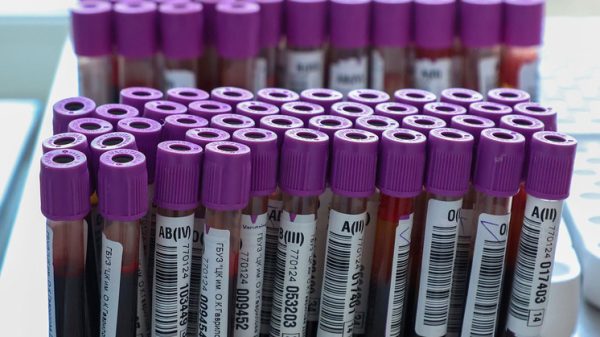
MOSCOW, December 18. SPbPU scientists studied a combined type of treatment for type 2 ataxia on an animal model and found that chlorzoxazone in combination with folic acid slows down the development of cognitive and motor impairments, and also promotes their partial recovery in severe cases of the disease. The results of the study were published in the journal Scientific Reports.
As reported at the Peter the Great St. Petersburg Polytechnic University (SPbPU), spinocerebellar ataxia type 2 (SCA2) is a rare hereditary neurodegenerative disease accompanied by cerebellar degeneration. It entails a progressive disruption of the coordination of movements of various muscles of the body and limbs and a number of other neurological manifestations (pyramidal and extrapyramidal symptoms, ophthalmoplegia, amyotrophy, dementia, slowing of saccadic (coordinated) eye movements and gaze paralysis). The disease primarily affects the neurons of the cerebellar cortex (Purkinje cells).
July 10, 09:00
«
"Animal models, such as genetically modified mice, are commonly used to study the fundamental basis of neurodegenerative diseases. During the research, we were able to confirm that in addition to the motor symptoms described in detail in many existing ataxic mouse models, ataxic mice exhibited cognitive and affective symptoms characteristic of patients — memory impairment, depressive behavior, spatial orientation disorder,” said a graduate student in the molecular laboratory neurodegeneration SPbPU Ksenia Marinina.
To treat mice, SPbPU scientists used the muscle relaxant chlorzoxazone, which is now used to treat musculoskeletal pain, for example, in cases of musculoskeletal injuries. According to them, previous research conducted at the university showed that chlorzoxazone restored motor impairment in mice with SCA2, but no one had previously mentioned its effect on cognitive function and mood changes.
The researchers found that chlorzoxazone also affects non-motor symptoms, but at the same time reduces the frequency of impulses generated by Purkinje cells, which can cause side effects in human patients. “As soon as folic acid was added to the therapy, unwanted symptoms were neutralized,” the university reported, adding that the chlorzoxazone-folic acid combination restores not only motor dysfunction, but also cognitive abilities.
< br />«Mice receiving the combination therapy experienced improved memory, a reduction in anxious and depressive behavior, and the restoration of lost learning strategies. For example, we were able to restore healthy levels of anxiety. SCA2 mice that did not receive treatment exhibited more risky and reckless behavior compared to mice without the disease, it means they had a reduced level of anxiety and treatment increased it to normal,” Marinina noted.
According to her, numerous tests for behavioral patterns allowed such conclusions to be made.
At present Now the scientists are faced with the task of expanding the study to two other hereditary diseases from the same group. According to them, the use of chlorzoxozone and folic acid as a combination therapy showed good results in the SCA2 model; now it is planned to test this treatment strategy in models of spinocerebellar ataxia type 3 and Huntington's chorea.
The study was supported by the Russian Science Foundation grant No. 22-75 -10030.
December 14, 07:00
























































Свежие комментарии